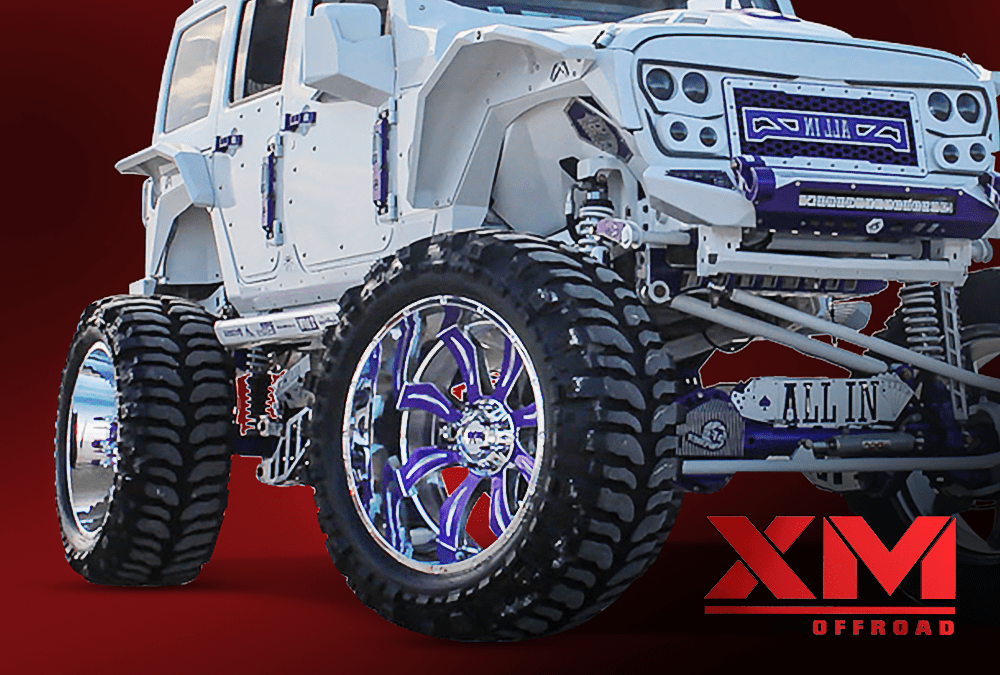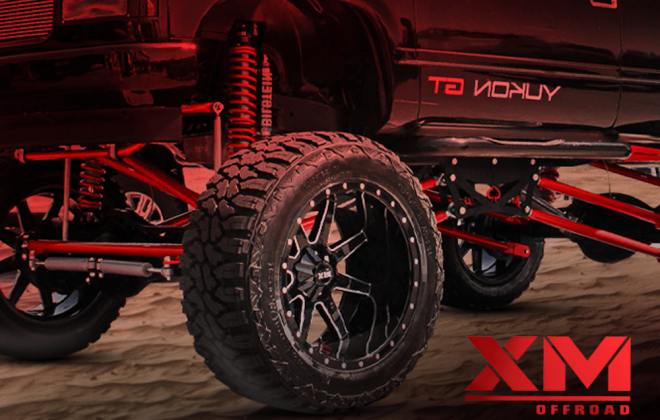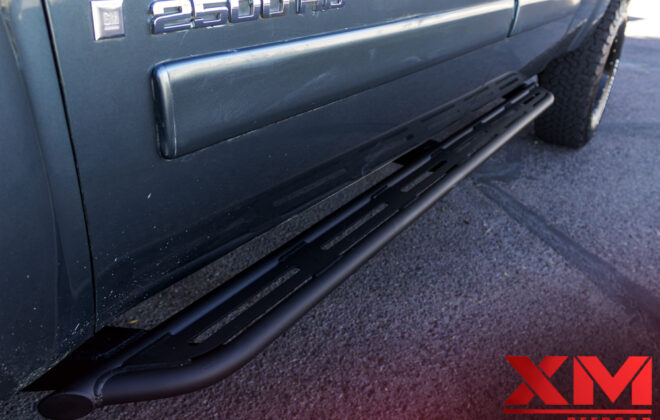
A Comprehensive Guide for Wheel Offset
Everyone aspires to be known for his positivity, skills, methodologies, and inventiveness. That is why some people prefer a tailored solution to their every problem. So, if you want to make a statement with your favorite vehicle, get a customizable ride with result-oriented work. What is the benefit of a tailored solution? Customized solutions eliminate uncertainty during the ride while also maintaining a comfortable ride. But don’t worry if you’re unfamiliar with selecting perfect wheels or the concept of wheel offset; we will go over it in more detail for your convenience. The offset of a wheel is the distance between the hub mounting surface and the wheel’s centerline.
Positive, negative, and zero offsets are the three significant types of wheel offset. It is also measured in millimeters. If you don’t understand the distinctions between the three categories, keep on reading for precise instructions. It will significantly assist you in owning your choice car or truck through customizable and secure solutions.
What Is Offset In The Wheel?
Offset means to compensate for the speed of something or to balance an issue with an appropriate and relevant solution. However, wheel offset refers to the specific distance between the hub mounting surface and the wheel’s centerline.
-
Types of wheel offset
Wheel offset is classified into three types. The first is a zero offset wheel. The second category of offset is a positive offset, and the third type is a negative offset.
- Zero wheels offset occurs when the hub mounting surface is parallel to the wheel’s centerline.
- A positive wheel offset refers to the hub mounting surface being in front of the wheel’s centerline.
- A negative offset refers to the hub mounting surface being behind the wheel’s centerline.
The core concern is backspacing, which is the distance that your wheel must manage for seamless operation and effectiveness. Furthermore, accurate measurement is a critical component for achieving an efficient result because any incorrect measurement or handling can lead to significant complications.
-
What kind of problems can occur from too much positive offset?
Everything runs smoothly and efficiently, resulting in remarkable and long-lasting results. Similarly, if your wheel has too much positive offset, it will endanger the tire and cause tire failure. Furthermore, it can result in poor handling. In contrast, it can encourage massive inner damage from the wheel’s inner edge. It can also cause tire damage due to abrasion. Furthermore, it can cause your car to become unstable while driving, which is a serious issue that must be addressed.
-
What kind of problems can occur from too much negative offset?
As previously discussed, a balanced approach can only yield positive results; similarly, too much negative offset can only result in disaster. Excessive steering wheel kickback can endanger your life if you have too much negative offset. Furthermore, it increased the stress on the entire suspension by reducing vehicle steadiness.
-
Negative Vs. Positive offset
The primary distinction is that the mounting surface areas are quite distinct. In positive offset, for example, the mounting surface is too far away from the wheel’s centerline; it is pretty tilted towards the street. In the case of negative offset, the mounting surface is wedged near the wheel’s centerline.
-
Why should I change my wheel offset?
Wheel Offset Explained
Changes should bring benefits to them; only then can we call it a wise decision. Wheel offset is critical if you want to make an exhilarating change in your ride or start exploring a safer journey. It not only provides more comfort and safety while driving, but it also provides a better position. You can also eliminate any mishap while driving by using reliable and customizable wheels and tires for your car or truck.
Some Positive Angels of Negative Offset
- As you are aware, the vehicle’s wheelbase and track must be determined to provide the best driving experience. Yes, depending on the width of the car or truck, it can be positive or negative. How so? Because the wheelbase measures the distance between the two wheels on the front and rear axles. And maintaining this distance is critical for a safe journey.
- Furthermore, for positive feedback, you must pay attention to the entire track stabilization. Aside from that, you enjoy the steering movements by driving smoothly and efficiently, restricting your activities by providing complete satisfaction to your brain. Your brain and hands support each other to avoid any uncertainty through a firm grip. So you can prevent any harm during driving with wheel offset because it pushes the tire sidewall outwards for better grip.
- However, hard parkers can reap significant benefits in terms of safety. According to automotive experts, wheel offset is the finest option for improving your car or truck’s stance. You can also customize your wheel with customized features to make your vehicle more spectacular, safe, and eye-catching.
Some Negative Angels of Negative Offset
- A wider track can put a lot of strain on your axle, bearings, hubs, and driveline. You should not carry a lot of weight to avoid this problem. Premature wear of the axle, bearings, and driveline can jeopardize your security.
- Fender rubbing can occur as a result of your tire’s excessive pop-out. If your tire is pooping out more expansive than usual, there is a good chance it will rub against your fenders. However, if you want to avoid this issue, you must roll your fenders and stretch your tires to fit better.
Some Positive Angels of Positive Offset
- A positive offset is the core reason for tucking the wheel inwards. A positive offset is highly recommended and preferred by many car manufacturers over a negative offset due to security differences.
- Positive offset supports off-road vehicles that have ample clearance within the wheel well. The offset rims ensure the accurate fitting of wider tires while avoiding sticking out.
- Positive offset makes sure to have neatly tucked tires through the accurate fitting with appropriate measurement and styling. If you seek the nice tucking inside your fenders, the positive offset is just to fulfill your desire.
- Moreover, with the help of a positive offset rim, you can avoid rubbing against the fenders. As you know, when you fit wider tires on the front side, it causes rubbing against the fender. So utilize positive offset to eliminate guard rubbing issues. So buy your customized and desired set of wheels and tires after all essential measurements and calculations.
| Section | Description |
| What Is Offset In The Wheel? | Offset refers to the distance between the hub mounting surface and the wheel’s centerline, with zero, positive, and negative types. |
| Problems with Too Much Positive Offset | Can cause tire failure, poor handling, and inner wheel damage. |
| Problems with Too Much Negative Offset | This may lead to excessive steering wheel kickback and increased suspension stress. |
| Negative vs. Positive Offset | Distinction between the mounting surface areas with respect to the wheel’s centerline. |
| Why Change Wheel Offset? | Changing wheel offset can provide comfort, safety, and better vehicle positioning. |
| Positive Aspects of Negative Offset | Can improve vehicle stance and provide better grip, but may strain vehicle components and cause fender rubbing if not done correctly. |
| Positive Aspects of Positive Offset | Tucks the wheel inwards, supports off-road vehicles and avoids fender rubbing, which preferred by many car manufacturers for safety. |
| Negative Aspects of Positive Offset | This can lead to clearance and tire failure issues, especially if the wheel is not properly fitted with the right clearance. |
Some Negative Angels of Positive Offset
The positive wheelset has some negative aspects, including clearance issues, and upper control arm scrubbing for independent front suspension vehicles. Also, you can have to bear the risk of tire failure.
- Wheel entire movement spectrum is crucial to account for before making any changes to your wheel setup. It deals with sideways movement while turning and also vertical direction while dealing with bumps. But failure in this can cause expensive damage from the edge of the wheel. Also, it will cause the tire to rub against the suspension components.
- Clearance issues are the core concern in positive offset. Like, if your brake caliper is massively close to the rim, it can cause dangerous clearance issues with 0.3 mm. It is essential to avoid excessive heat for your vehicle because that can cause your rim to flex while banking through hard corners. And it will lead to a clearance issue.
- Positive offset also causes tire failure if you do not have enough clearance. It is also a life threat because excessive rubbing can tear up the tire and pose a risk to your life.
Positive wheel offset should have proper clearance for smooth work; otherwise, it can cause severe damage through suspension components, brake calipers, and tire failure.
Can We Measure Wheel Offset?
Wheel offset can be evaluated. All you need is a straight edge, a ruler, and a calculator. First, you must determine the centerline. You can do this by laying the rim flat on its face. The ruler should then be vertical, while the straight edge should be horizontal. Measure the width of the wheel. Second, determine the backspacing by measuring from the mounting point to the rim’s outer edge. Finally, deduct the result of the centerline from the result of backspacing to evaluate offset.
Conclusion
The right wheel can guarantee a relaxing and secure ride with the right tires and wheels. Furthermore, if you want more steadiness and an ideal stance while driving, you should use wheel offset for better outcomes. The wheel offset is the distance between the hub mounting surface and the wheel’s centerline. It comes in a variety of shapes and sizes, along with positive and negative wheel offset. Still, the most common is positive wheel offset due to stuffing the wheel inward and accurate fitting. Alternatively, the negative offset has both positive and negative aspects, such as clearance issues, and premature axle wear, and is highly beneficial to hard parkers.
Author Bio
Mariana Suzanne is associated with XMudderWheels as a blogger. She is a very talented and competent writer. Mariana is enthusiastic in the fields of computing, artificial intelligence, automobiles, and education. She has a degree from Harvard University.




